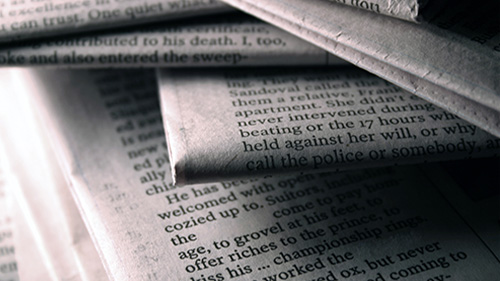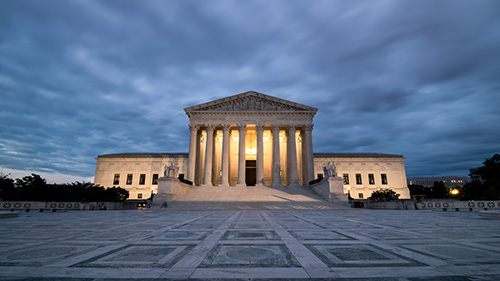AP European History Exam: Mastering Historical Reasoning Processes
From a practical point of view, argumentation is at the heart of the free response section of the AP exam. This can be particularly difficult with...
AP & Honors Mathematics
Explore Wiley titles to support both AP and Honors mathematics instruction.
Literacy Skills & Intensive Reading
Connections: Reading – Grades 6–12
Empower student success with a proven intensive reading program that develops strong reading skills in striving readers.
Drama, Speech & Debate
Basic Drama Projects 10th Edition
Build students’ confidence and competence with comprehensive, project-based theatre instruction.
Literature
Connections: Literature
Support learners as they study dynamic, relevant texts and bring the richness of diverse voices to students through literature.
Literature & Thought
Develop critical thinking, reading, and writing across literacy themes, genres, historical eras, and current events.
Language Arts
Vocabu-Lit® – Grades 6–12
Help students build word power using high-quality contemporary and classic literature, nonfiction, essays, and more.
Connections: Writing & Language
Help students develop grammar, usage, mechanics, vocabulary, spelling, and writing and editing skills.
Reading/English Language Arts
Measuring Up to the English Language Arts Standards
Incorporate standards-driven teaching strategies to complement your ELA curriculum.
English Language Learners
Measuring Up for English Language Learners
Incorporate research-based best practices for ELLs with an approach that includes a focus on language acquisition strategies.
Mathematics
Measuring Up to the Mathematics Standards
Incorporate standards-driven teaching strategies to complement your mathematics curriculum.
Foundations
Measuring Up Foundations
Help students master foundational math skills that are critical for students to find academic success.
Science
Measuring Up to the Next Generation Science Standards
Give students comprehensive NGSS coverage while targeting instruction and providing rigorous standards practice.
Assessment
Measuring Up Live
Deliver innovative assessment and practice technology designed to offer data-driven instructional support.
For a better website experience, please confirm you are in:
4 min read
Lou Gallo Apr 1, 2025 8:00:00 AM

From a practical point of view, argumentation is at the heart of the free response section of the AP exam. This can be particularly difficult with younger students who are taking their first AP history class. Properly organizing and planning essays can help our students to write more effectively and score higher on the exam
This blog post is a lesson that I do in class the week before the AP exam to remind students how to plan, think, and organize essays regardless of the historical reasoning process being assessed.
Connection to Course Framework and Standards Addressed:
Historical Thinking Skills: Claims and Evidence in Sources and Argumentation
Reasoning Processes: Comparison, Continuity and Change, Causation,
Learning Objective:
Class Time: 2 class periods (45–50 minute periods)
Overview: This lesson is focused on reminding students how to organize the LEQ while focusing on reviewing relevant content.
OVERVIEW (5 minutes):
ESSAY ORGANIZATION REVIEW (10 minutes):
II-IV. Body Paragraph Structure (number of body paragraphs will vary…2 body paragraphs is perfectly acceptable if you’re using multiple pieces of evidence).
|
Comparison |
Continuity and Change |
Causation |
|
II. Theme 1 (Similarities and/or Differences) III. Theme 2 (Similarities and/or Differences) IV. Theme 3 (Similarities and/or Differences)
|
II. Theme 1 (Changes and/or Continuities) III. Theme 2 (Changes and/or Continuities) IV. Theme 3 (Changes and/or Continuities)) |
II. Theme 1 (Supports Thesis) III. Theme 2 (Supports Thesis) IV. Theme 3 (Additional or Counter Argument) [on the other hand] |
STUDENTS COLLABORATE (45 minutes–15 minutes for each prompt.):
DISCUSSION/REFLECTION (30 minutes-10 minutes for each prompt):
POSSIBLE RESPONSES BELOW IN RED
Thesis: Although similar on the surface, the homefront experiences during World War I and World War II were mostly different mainly because the government was more involved during World War II because of the amount of time that the US was at war.
BP 1 supports the thesis: Discusses how government involvement in the economy was more significant during WWII using the War Production Board as evidence. The paragraph also discusses how rationing during WWI was voluntary compared with compulsory during WWII.
BP 2 supports the thesis: Discusses increased use of technology such as the radio and film for communication and propaganda during WWII.
BP 3 contradicts the thesis by discussing similarities: Discusses the role of women during both wars and that both periods saw a rise in advocacy for women’s rights. The paragraph also discusses similarities in African American experiences during war.
Thesis: The major factors that led to increased tension between the British government and the colonists during the period 1763-1776 include the end of salutary neglect, increased taxation, and King George III’s actions after he declared the colonies in rebellion.
BP 1 supports the thesis: Discusses how the end of salutary neglect led to increased British control through actions such as the Proclamation Line in 1763 and occupation in Massachusetts in the early 1770s.
BP 2 supports the thesis: Discusses how increased taxation led to colonial resentment. Evidence can include the Stamp Act, Townshend Acts, Tea Acts, etc.
BP 3 supports the thesis: Discusses British actions after Lexington and Concord including the burning of towns and the hiring of the Hessians, known for their brutality.
Thesis: Women’s experiences from World War I to the present have changed to a large extent because women have become more politically involved since World War I and are more involved in the workforce.
BP 1 supports the thesis + discusses both changes and continuities: Discusses the changes in politics starting with voting rights after WWI and the fact that many women serve in high offices including Kamala Harris as VP in 2020 and/or ran for high offices such as Geraldine Ferraro in 1984, Sarah Palin in 2008, and Hillary Clinton in 2016.
BP 2 supports the thesis + discusses changes and continuities: Discusses how women have had more advances in the workplace. Evidence could include women as CEOs, increased average salaries for women, and a higher percentage of women in the workforce.

From a practical point of view, argumentation is at the heart of the free response section of the AP exam. This can be particularly difficult with...

This lesson aims to show teachers and students how to develop a historical argument using Document-Based AP History (DBQ) documents. We will use...

Unlock the power of historical thinking and writing as you elevate complexity and engagement in AP History classrooms. Presented by experienced AP...

Join AP experts Brandon Abdon, Colin Baker, and Bob Topping to discover scaffolded approaches to teaching the APUSH, AP Euro, and AP World History...

The Secondary Source Short Answer Question (SAQ) on the AP history exam presents a unique challenge: students must analyze and synthesize historical...

Experienced AP World History teacher Dave Drzonek and AP World History Exam table leader Charlie Hart discuss what students did well and what they...

In a 2004 Gallup survey, history and social studies ranked as the least popular subject for teenagers. Why is this? Many adults recount history class...

One of the personal stories I frequently share with my students is how I nearly became a lawyer. I majored in political science and philosophy in...

The teaching of AP® World History can be a daunting task at times. Teachers are asked to teach over 800 years of historical content and then develop...

This interactive webinar focuses on scaffolded approaches to the finishing touches necessary for higher-level success on the LEQ and DBQ portions of...

The following lesson plan uses the historical thinking skills of comparative and cause and effect to analyze two historians' perspectives on the...

Contextualization is an intriguing skill introduced in the redesigned AP History courses. It plays a crucial role in multiple aspects of the courses,...
